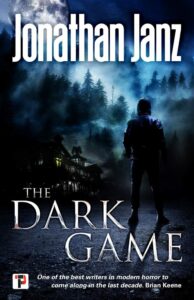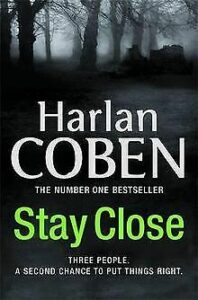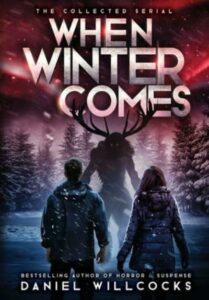
How to create suspense is a question writers often ask me.
I get why they ask it, though. Creating suspense (i.e., raising the hairs at the nape of your reader’s necks and causing their hearts to beat a little faster) is not the easiest thing to do.
Why?
Because you’re tapping into a reader’s base fear, an emotion that can be tricky to evoke.
But evoke it you can, my writerly chum!
This article is going to show you how to create suspense and keep your characters (and readers) on the edge of their seats.

What is Suspense?
We can define suspense in writing in many different ways. Some of these include:
- Creating a feeling of tension for your characters and your readers
- Creating a sense of anticipation that makes readers want to know what happens next
- Creating an atmosphere of danger to make readers worry about your characters
Did you notice a theme there?
In each of the above examples, I used the following words:
- Feeling
- Tension
- Sense
- Anticipation
- Atmosphere
- Danger
When answering the question, “How to create suspense?” we can say writing suspense is:
Activating the reader’s fear response (emotion) by creating uncertainty (tension) in our stories.
Uncertainty is the key to writing great suspense.
Why?
Because people (including your readers) fear the unknown.
How Do Authors Create Suspense?
Building on what I spoke about above, the three basic tenets of writing suspense are:
Suspense Technique #1: Tension
Here at Fictionary, we define tension as the threat of something bad happening, because that’s the easiest way to explain it. If you need to tap into a reader’s fear response, then what better way to do it than threaten your characters with bad, bad things.
Suspense Technique #2: Anticipation
If tension is the threat of something bad happening, then anticipation is the possibility of something good happening.
I know what you’re thinking. You’re supposed to be teaching me how to create suspense, Shane. How does the possibility of something good happening help me do that?
Because of that one word… possibility.
The good thing happening isn’t guaranteed, which creates…
You got it!
Uncertainty, which—as we’ve chatted about already—is the key to writing great suspense.
Suspense Technique #3: Danger
Danger goes hand-in-hand with tension and anticipation. As humans, our fear response stems from the threat of danger. Danger to our:
- Health
- Relationships
- Life
- Professions
- Homes
Doesn’t matter.
Danger is a threat, and threats create suspense!

Tips for How to Create Suspense
Now you know what suspense is, and the basics of using suspense, let’s dive deep into actionable tips for how to create suspense.
How to Write Suspense Tip #1: Leverage Your Exit Hooks
Exit hooks (the way you end your scenes) are a great way to create suspense in fiction.
Some common exit hooks include a/an:
- Dramatic cliffhanger: perhaps your protagonist’s life is at risk
- Revelation: show the reader something that will change the course of the story
- Setback for the protagonist: present your main character with realistic, suspenseful obstacles
- Secret revealed: you can either reveal a full secret, or only part of a secret, the rest of which may be revealed in the next chapter
- Question left hanging: this will tease the reader, making them crave the answer
- Unexpected plot twist: to keep the reader guessing!
See how each of these things provides the how in how to create suspense?

How to Write Suspense Tip #2: Leverage your Plot
Some of this crosses of with the exit hooks section above, but your plot deserves its moment in the spotlight, but there’s so much you can do with it to create suspense:
- Introduce a ticking clock: Put a time limit on your character’s goals and you’ll easily crank up the tension and suspense in you stories
- Make your main character the underdog: if everyone (including your protagonist) doesn’t expect them to win, and they seem out of their depth, there will always be a constant threat of danger
- Give the reader knowledge: crucially, this is something the reader knows the main character doesn’t (this is also known as dramatic irony), and the main character’s ignorance places them in peril (your reader should be shouting something like, “No! Don’t eat the stew. It’s poisoned!”
- Mysteries and Puzzles: Introducing mysteries and puzzles (that are hard to solve, but MUST be solved if the protagonist is going to achieve their goal) is a great answer to how to create suspense

How to Write Suspense Tip #3: Leverage Your Characters
Characters are a goldmine for how to create suspense, and here are some ways your can use your cast to do that:
- Secrets: Whether your characters have secret identities, extra marital activities, past crimes/mistakes that they want to remain secret, this is a great way to create tension and suspense
- Subtext: The most obvious example is the ubiquitous, “I’m fine.” (that person is not fine and readers will be thinking, oh no! Argument approaching.)
- Betrayal: There’s nothing like the threat of betrayal by someone your protagonist trusts to create suspense

How to Write Suspense Tip #4: Leverage Your Settings
Just like exit hooks, plot and character, you can milk your settings for extra suspense using these techniques:
- Description: If you main character is in a forest on a moonlit and you describe the shadows as something sinister, this creates suspense
- The Senses: Sound is really useful hear, because creepy sounds in prose help to create atmosphere
- Weather: Roiling clouds, thunderclaps, starless obsidian skies… all of these things can create a feeling of tension

Suspense in a Story Examples
Let’s take our actionable tips around how to create tension and find examples from real-life storytelling:
Example #1: Leverage Exit Hooks
Fictionary Certified StoryCoach James Gallagher recently interviewed bestselling horror author, Jonathan Janz, for his Scene It First series, and the exit hook James examined from one of Jonathan’s scenes in The Dark Game was epic:
“‘Sure,’ Bryan said. He started toward the forest but paused and looked at her. ‘I hope you remember what happens when people cross me.'”
—Jonathan Janz, The Dark Game
This is a Question Left Hanging because readers will want to know what exactly does happen when people cross this character.

Example #2: Leverage Plot
In Catching Fire , the second instalment of The Hunger Games trilogy, Suzanne Collins introduces a Ticking Clock (literally), when she turns the arena into a clock, and sets a time limit for when Katniss and her friends need to exit the arena.

Example #3: Leverage Characters
I’m a sucker for secrets (and the Secret Identity Trope in particular).
In Stay Close by Harlan Coben, we meet Megan, who isn’t actually Megan at all. The opening line of the blurb reads:
“Megan is a suburban soccer mom who once upon a time walked on the wild side.”
—Harlan Coben, Stay Close
So, the question becomes, if Megan isn’t Megan, who is she?
Suspense!

Example #4: Leverage Settings
Daniel Willcocks’s horror novel, When Winter Comes is set against the backdrop of the icy Alaskan wilderness. Part of the blurb reads:
“In the isolated reaches of a frozen Alaskan town, a creature is awoken.”
—Daniel Willcocks, When Winter Comes
Imagine being relatively alone in a barren landscape when an ancient, threatening creature wakes up…
That setting gives me chills!

Suspense Building Technique sConclusion
How to create suspense is a challenging task, but using the tips in this article, you feel confident you’re telling a story packed with:
- Tension,
- Atmosphere, and;
- Danger.
Most importantly, have fun with how you create suspense!

